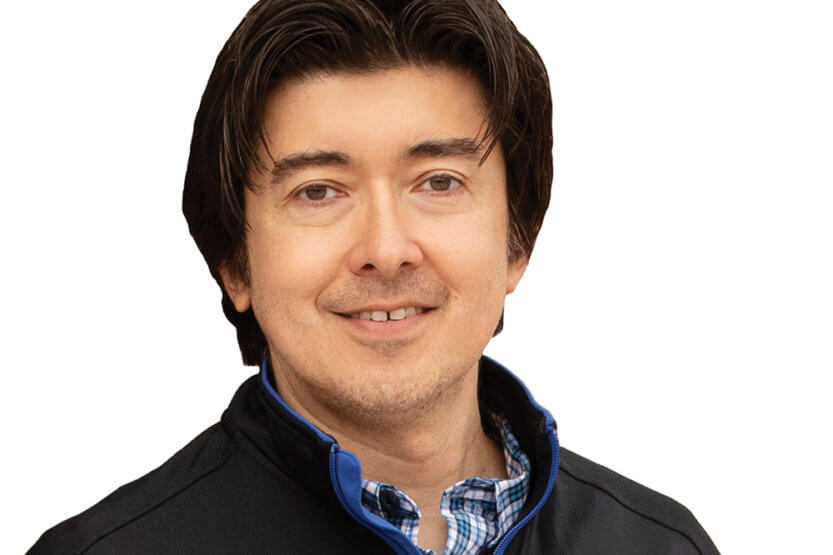In Class: Math Master
 Dept. of Mathematics senior lecturer, Aldo Manfroi (Image by L. Brian Stauffer)
Dept. of Mathematics senior lecturer, Aldo Manfroi (Image by L. Brian Stauffer) I teach a class on differential equations. This semester I’m teaching close to 600 students. They are mostly sophomore and junior engineering majors. It’s the course they take after Calculus 3. Most of them enroll in my class before they take courses where they will need to use differential equations. They’re used in physics and biology, and in engineering to model things that change.
I don’t have a degree in math; I have degrees in physics and physical oceanography. My parents always made fun of that. They said that I was studying dolphins. But I was mostly doing fluid dynamics. My research helps me relate to the students. I’m not just teaching the theorems, the rules. My approach is more about: How do we apply this? How do we solve this problem?
Sometimes you have to find an approach to a particular problem that may not be intuitive. That’s when students have trouble. Then it’s a matter of going through the process, explaining it a couple of times and doing a lot of examples. Sometimes you have to introduce a substitution, which makes the problem easier. Then, usually, the students get it.
In the second part of the semester, the course gets more interesting because we start looking at things that are relatable to everyday life. Like diffusion. When you mix cream and coffee, that mixture is diffusing. You put salt in water, it’s diffusing. Those are the kinds of things that are described by diffusion equations.
For oscillation, I usually begin by talking about a guitar or a piano string. The frequency of oscillations creates the notes that you hear. The sound of the note depends on the length of the string, the tension on the string and things like that. I sometimes use a mass and spring system [pictured]. The equation that describes this is appropriately called the mass-spring oscillator equation. Later on, students who become engineers may design a structure with beams. Beams can oscillate. That’s when they would use that information from my class.
I teach in fields that are still very male-dominated. I try to make sure that female students are heard. I am careful to make sure that all students have the opportunity to ask questions. Many students come from countries where you really are not supposed to ask questions; you just sit in class, listen to the professor.
When I was an undergraduate student in Italy, students would ask questions, but that wasn’t really encouraged. The professor wouldn’t stop and ask if things were clear. He or she would just come to class, do their lecture and leave.
I ask my students to keep in touch. Some of them ask me to be friends on Facebook, and then I get to see what they do after graduation. I have students who now work at automobile manufacturers and oil companies. I also have a student who has opened a very successful pizza place in Seattle. It’s nice to see the different paths that they take.
Edited and condensed from an interview conducted on March 1, 2021.


